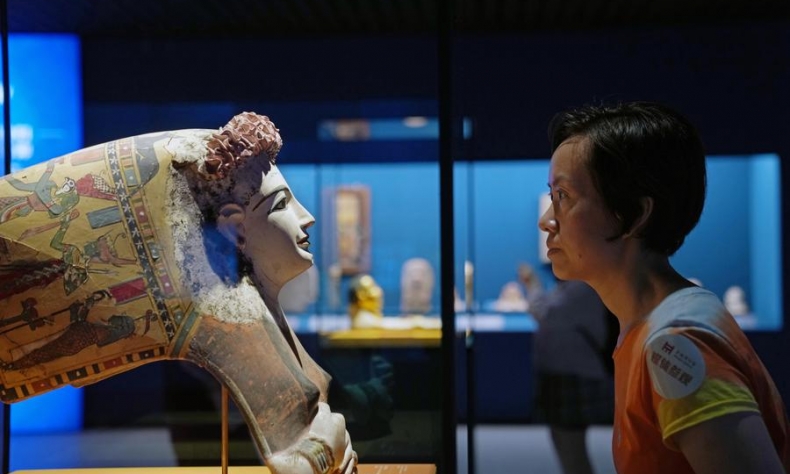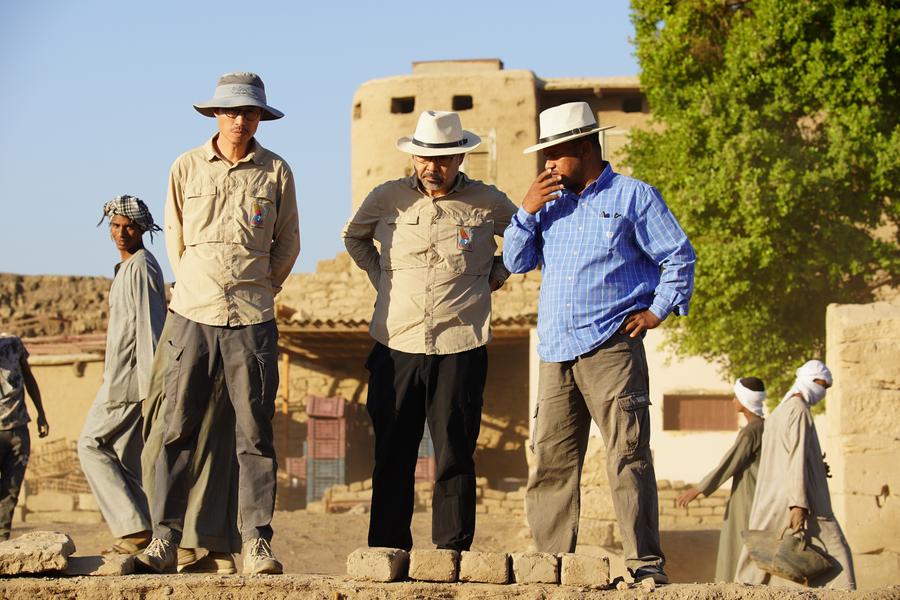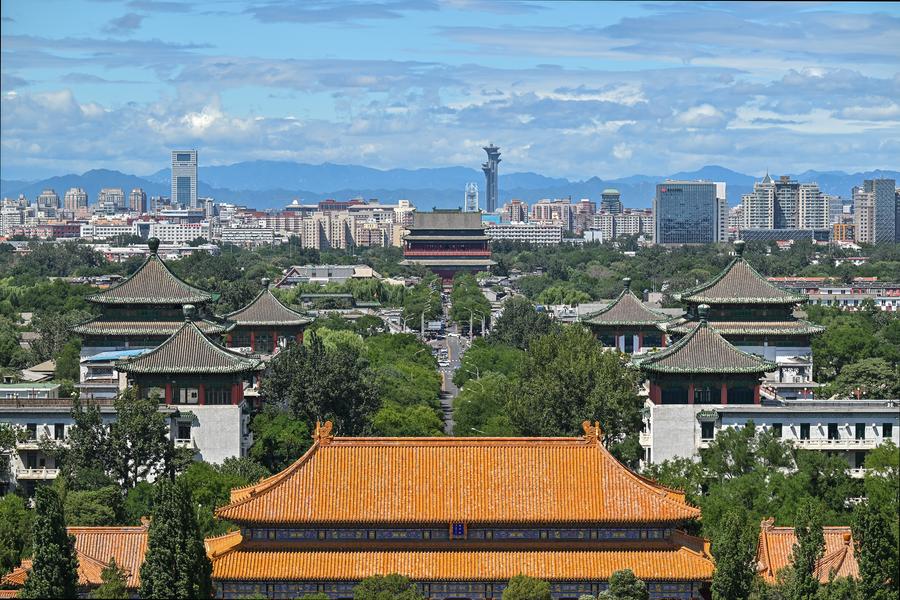Preserving the Past

China’s approach and experience in heritage conservation is worth emulating by other countries.
In recent years, China has placed increasing emphasis on the protection of cultural heritage. In July 2024, Beijing’s Central Axis was officially inscribed on the World Heritage List, and on 4 December 2024, the Spring Festival was added to the UNESCO Intangible Cultural Heritage List. Public awareness of the importance of preserving historical sites and promoting the inheritance and celebration of Chinese civilisation has also grown significantly.
On this occasion, ChinAfrica talked to Khaled Ahmed El-Enany, UN tourism ambassador for cultural tourism, former Egyptian minister of tourism and antiquities, and a candidate for the post of director general of UNESCO, to hear his insights on the exchange of human civilisations and the protection of historical heritage.
ChinAfrica: The year 2024 marks the China-Egypt year of partnership and the 10th anniversary of the establishment of the comprehensive strategic partnership between the two countries. Cultural events such as exhibitions featuring Egyptian civilisation held in Beijing and Shanghai have attracted widespread attention. What achievements have been made in the collaboration between China and Egypt in cultural heritage preservation and tourism? What are the future directions for cooperation in these areas?
Khaled Ahmed El-Enany: Indeed, 2024 marks a significant milestone in the partnership between China and Egypt, celebrating the 10th anniversary of friendship and comprehensive partnership particularly in cultural heritage preservation and tourism.
When I was Egypt’s minister of tourism and antiquities, I facilitated numerous international cultural collaborations, such as the Grand Egyptian Museum project, which brought together experts from across the world, including China, to safeguard Egypt’s heritage. Looking forward, we can build on these achievements by deepening our cooperation in digital transformation serving heritage preservation. For instance, China’s digitisation of the Mogao Caves could inspire similar efforts for Egypt’s Valley of the Kings, making these treasures more accessible globally.
My commitment to peace and international cooperation lies at the heart of my vision for UNESCO. I firmly believe that promoting culture is a powerful vehicle for peace, capable of bringing people together.

As two ancient civilisations with rich histories, what are the similarities and differences in the challenges China and Egypt face in preserving their historical heritage and their approaches to address them? What can China learn from the experiences of Egypt?
Egypt and China are two of the world’s oldest and most remarkable civilisations, each with a deep and proud history that has shaped humanity. While our challenges in preserving historical heritage are rooted in the richness of our past, they also reflect the pressures of the present. Both nations face similar issues: the risk of losing heritage to illegal trafficking, the strain of balancing rapid urbanisation with preservation, and the need to engage younger generations in understanding and valuing their cultural roots.
One key similarity is the importance we place on seeing heritage not only as a connection to our past but as a foundation for our future. Both Egypt and China recognise that protecting and sharing our cultural legacy is essential to fostering national pride and global understanding. However, our approaches sometimes differ due to our unique contexts. For instance, Egypt’s long-standing engagement with international archaeologists has created an extensive system of collaboration with global partners, which has helped us to uncover, document, and protect treasures from our past.
China, on the other hand, has been a leader in integrating cutting-edge technology like AI and digital platforms into heritage preservation. This is an area where Egypt is eager to learn from China’s experience. At the same time, I believe China can benefit from Egypt’s approaches to promoting public engagement and sustainable tourism as tools for preservation.
Beijing’s Central Axis has been successfully listed as a UNESCO World Heritage Site. What is the significance of this achievement for China’s cultural heritage preservation and its global influence?
The successful inscription of the Beijing Central Axis as a UNESCO World Heritage Site is a monumental achievement that underscores China’s dedication to cultural heritage preservation and its influence on global heritage discourse. This site, with its remarkable north-south orientation, exemplifies centuries of urban planning principles rooted in Confucian ideals. It tells a story of governance, ritual, and harmony, preserving traditions that have shaped not only Beijing but also the broader cultural and political systems of East and Southeast Asia.
It is a testament to its efforts to protect and celebrate its rich history. It demonstrates the country’s ability to balance modernisation with heritage conservation. The meticulous preservation of the axis’s layout, architecture, and associated rituals – along with innovative management strategies like the 2022–2035 Conservation and Management Plan – serves as a model for other nations navigating the complexities of heritage preservation amidst urbanisation.
Globally, this recognition amplifies China’s role as a steward of world heritage, providing a platform to share its approach to safeguarding cultural identity while fostering sustainable development.
I commend China for the inscription achievement. It highlights the importance of integrating cultural preservation into modern urban planning and ensuring that historical sites remain vibrant centres of community pride and global learning.

How do you evaluate China’s recent progress in cultural heritage preservation and its integration with innovative approaches, such as the rising trend of history- and culture-themed educational tours, and the global popularity of Black Myth: Wukong, which have sparked renewed interest in historical sites and cultural heritage? What is the significance of such initiatives for promoting people-to-people ties and fostering mutual trust between countries?
I am greatly impressed by China’s innovative approach to heritage site monitoring, preservation and celebration. Digitalisation is no longer an option; it is a necessity.
I believe that UNESCO must lead the way in adapting education and culture to new technologies. I envision a future where UNESCO not only protects cultural heritage but also shares it on a global scale through technology and modern educational pathways.
Such efforts align with the growing trend of using cultural heritage as a tool for education, entertainment, and cultural celebration.
The Global Civilisation Initiative (GCI) has gained attention worldwide. What is your view on its potential to enhance cross-cultural understanding and cooperation?
The GCI is a visionary framework that resonates deeply with my own beliefs about the importance of fostering cross-cultural understanding and cooperation. It is a powerful reminder that, despite our differences, the diversity of human civilisations is a source of strength, inspiration, and progress.
As a candidate for UNESCO director general, I see the GCI as perfectly aligned with UNESCO’s mission to promote intercultural dialogue, preserve cultural heritage, and encourage mutual learning among nations. The principles of the GCI – respect for cultural diversity, dialogue, and the joint pursuit of shared goals – mirror UNESCO’s core values and can serve as a cornerstone for strengthening global peace and sustainable development.
I am particularly inspired by the GCI’s emphasis on equality among civilisations. It encourages us to reject the notion of cultural hierarchies and instead recognise the contributions of every civilisation to the progress of humanity. Egypt and China, as two ancient civilisations with profound histories, are living examples of how shared values like harmony, balance, and respect can guide human progress.
If elected, I would ensure that UNESCO works hand in hand with initiatives like the GCI to expand platforms for dialogue, support the preservation of diverse cultural heritages, and promote joint educational programmes that bring people closer together.
 Facebook
Facebook
 Twitter
Twitter
 Linkedin
Linkedin
 Google +
Google +










